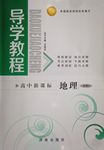题目内容
阅读下面短文,从短文后各题所给的四个选项(A、B、C和D)中,选出可以填入空白处的最佳选项,并在答题卡上将该项涂黑。
Making friends is a skill. Like most skills,it ________ with practice. If you want to meet people and make friends, you must be able to take some actions. You must first go ________ there are people. You won’t make friends staying home alone.
________ a club or a group, for talking with those who like the same things as you do is ________ easier. ________ join someone in some activities.
Many people are ________ when talking to people. After all,meeting ________ means facing the unknown. And it’s human nature to feel a bit uncomfortable about the ________.
Most of our fears about dealing with new people come from doubts about ourselves. We think other people are judging us,find us too tall or too short,too ________ or too fat. ________ don’t forget that they must be feeling the same way. Try to ________ yourself as you are,and try to put the other person at ease(舒适). And you’ll feel more ________.
Try to act self-confidently(自信地) even if you don’t feel that way ________ you enter a room full of strangers,such as a new classroom,walk tall and straight,look directly at other people and ________. If you see someone you’d like to ________ something to, don’t wait for ________ person to start a conversation.
Just meeting someone ________ doesn’t mean that you will make friends with that person—________ is based on mutual(相互的) liking and “give and take”. It takes ________ and effort to develop. And there are things that ________ a new friendship from growing.
1.A. producesB. improvesC. increasesD. raises
2.A. whereB. whenC. whyD. what
3.A. Join inB. AttendC. JoinD. Take part
4.A. veryB. moreC. everD. much
5.A. OrB. ButC. So thatD. Either
6.A. nervousB. excitedC. worriedD. happy
7.A. friendsB. classmatesC. strangersD. teachers
8.A. unknownB. richC. poorD. old
9.A. bigB. thickC. kindD. thin
10.A. SoB. ThenC. ButD. Too
11.A. receiveB. acceptC. thinkD. find
12.A. friendlyB. comfortableC. niceD. good
13.A. beforeB. afterC. untilD. when
14.A. laughB. smileC. stareD. speak
15.A. sayB. tellC. speakD. talk
16.A. anotherB. otherC. the otherD. others
17.A. youngB. oldC. smallD. new
18.A. loveB. friendshipC. dislikeD. care
19.A. moneyB. troubleC. timeD. information
20.A. stopB. startC. haveD. help
 导学教程高中新课标系列答案
导学教程高中新课标系列答案 小学课时特训系列答案
小学课时特训系列答案
